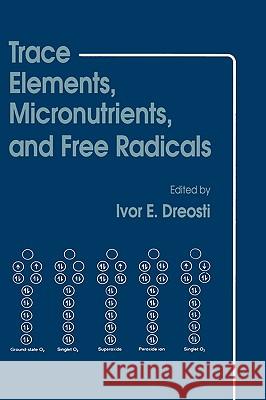Trace Elements, Micronutrients, and Free Radicals » książka
Trace Elements, Micronutrients, and Free Radicals
ISBN-13: 9780896031883 / Angielski / Twarda / 1991 / 231 str.
Trace Elements, Micronutrients, and Free Radicals
ISBN-13: 9780896031883 / Angielski / Twarda / 1991 / 231 str.
(netto: 576,41 VAT: 5%)
Najniższa cena z 30 dni: 578,30
ok. 22 dni roboczych
Bez gwarancji dostawy przed świętami
Darmowa dostawa!
Itisonlyrecently thatthe naturaloccurrenceoffree radicalsin biological tissue has become widely accepted, and that the suspi- cion with which biologists previously viewed the free radicals of radiationchemistryhas beenplacedin a broaderperspective. Now, oxygen-derived free radicals are considered respectable biochemi- cal intermediates, given always the caveat that unwanted tissue damage may arise if these active species are produced in such abundance that they overwhelm the natural antioxidant and free- radical defense mechanisms, or if these systems have become hypoeffective. Many factors, including several dietary manipula- tions, can lead toelevatedproductionofsuperoxide and may result in free radical overload, whereas a deficiency of those micronutri- ents associated with the antioxidant defense mec.hanisms may re- sult in substantially diminished antioxidant capacity. By now, antioxidants have become a household word and al- most everyone is aware of their imponance in protecting the body against attack by active oxygen species. Indeed, it is a paradox of nature that oxygen, which is so essential to sustain aerobic life, ul- timately contributes to its destruction. Not surprisingly, recogni- tion ofthis dilemma has generated a spate ofantioxidant strategies intended to reduce the risk of tissue damage by rampant oxygen radicals, some sadly based less on science than on speculation.











